The chaparral is a unique habitat that is home to a diverse range of birds. Located in areas with a Mediterranean climate, the chaparral biome is characterized by dry summers and mild, wet winters.
The flora and fauna that inhabit this region are highly adapted to the challenging environment. The birds that live in the chaparral biome are no exception. They have developed unique characteristics and behaviors to survive in this harsh environment.
This article provides a list of birds that can be found in the chaparral biome, highlighting their unique features and contributions to this ecosystem.
1. Cactus Wren
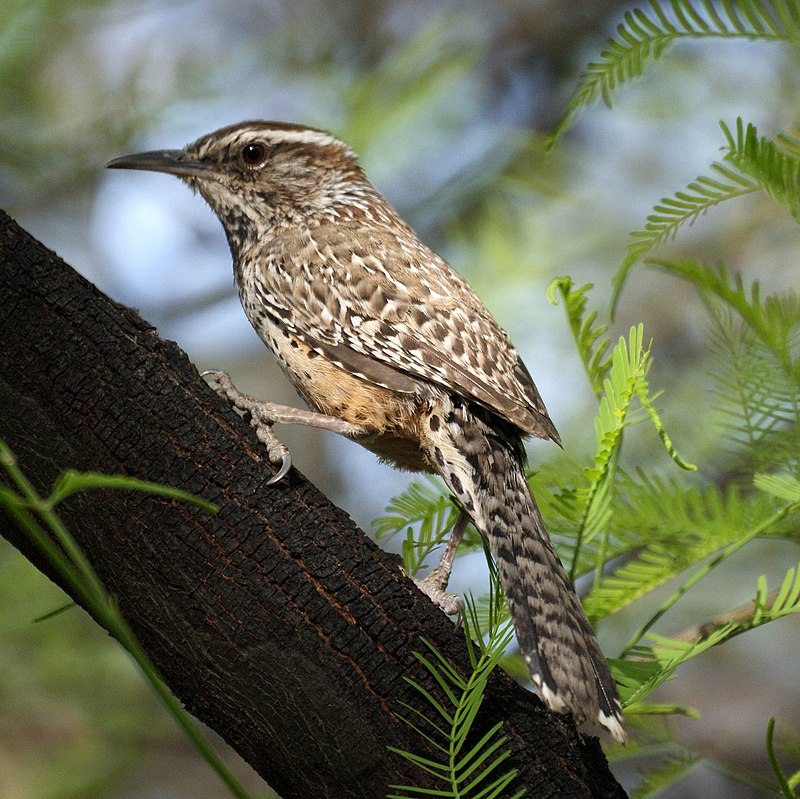
The cactus wren is an enchanting bird found in the deserts of the southwestern United States and northern and central Mexico.
It has a unique brown plumage, with black and white spots as markings, along with a distinctive white eyebrow sweeping to its nape.
Its chest is also snow-white, whereas its belly features light brown bars that contrast nicely against other feathers.
This species holds special significance for Arizona – it was declared their state bird due to its large size compared to other US wrens.
Cactus Wrens are often seen perched atop Saguaro cacti or jumping around on desert ground searching for food such as insects like beetles or spiders.Scientific classification:
| Kingdom | Animalia |
| Phylum | Chordata |
| Class | Aves |
| Order | Passeriformes |
| Family | Troglodytidae |
| Genus | Campylorhynchus |
| Species | C. brunneicapillus |
Also Featured In: Most Common United States Birds, Phoenix Birds You Should Know
2. Greater Roadrunner
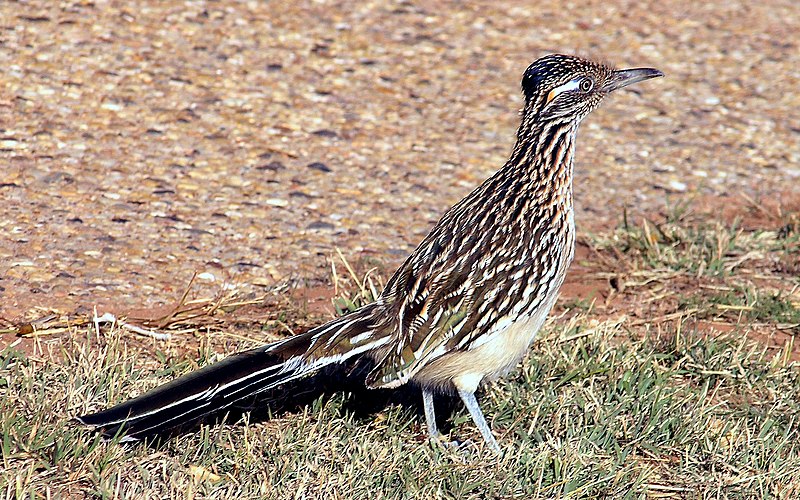
The Greater Roadrunner is a long-legged bird in the Cuculidae family that can be found throughout Aridoamerica. It has many nicknames, including Californian Earth-cuckoo, Chaparral Cock and Snake Killer.
This species is one of two birds belonging to the genus Geococcyx – the other being its smaller counterpart, Lesser Roadrunner.
The Greater Roadrunners are known to eat anything they can catch such as lizards, snakes and insects, making them very valuable predators for keeping pests at bay.
They also have an impressive burst of speed over short distances which helps with hunting prey or escaping danger quickly.
With their large eyes and distinctive black tip on their tail feathers, these amazing creatures make quite an impression when spotted out in nature.Scientific classification:
| Kingdom | Animalia |
| Phylum | Chordata |
| Class | Aves |
| Order | Cuculiformes |
| Family | Cuculidae |
| Genus | Geococcyx |
| Species | G. californianus |
Also Featured In: Birds that Live in the Deserts, Birds You’ll Find in South Texas
3. Bewick’s Wren
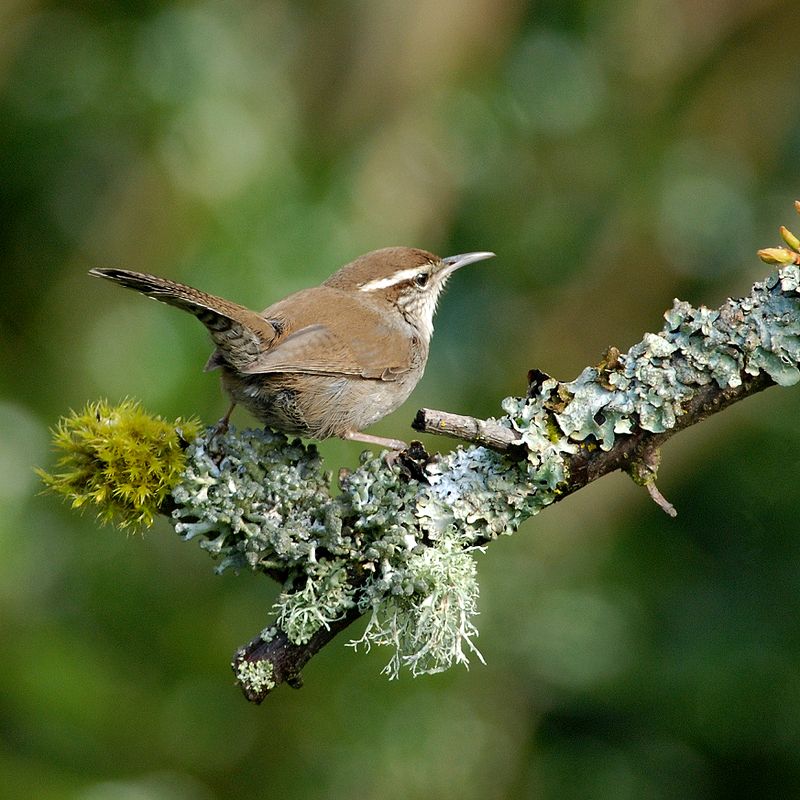
The Bewick’s wren (Thryomanes bewickii) is a small, grey-brown bird native to North America. Measuring at around 14 cm long it has distinctive white markings on its face and tail giving it an attractive appearance.
It can often be found in thickets or scrubby areas as well as urban gardens and parks.
Its song is loud and melodious which makes them popular amongst ornithologists; they are known for their complex vocalisations composed of whistles, clicks, churrs and trills.
The Bewick’s Wren mainly feeds on insects but will also eat fruits if available during the colder months when food may otherwise be scarce.
This species of wren plays an important role in controlling insect populations making them beneficial inhabitants of our environment.Scientific classification:
| Kingdom | Animalia |
| Phylum | Chordata |
| Class | Aves |
| Order | Passeriformes |
| Family | Troglodytidae |
| Genus | Thryomanes P.L. Sclater, 1862 |
| Species | T. bewickii |
Also Featured In: Top Birds Found in Mexico, Common Southern Californian Birds
4. American Bushtit
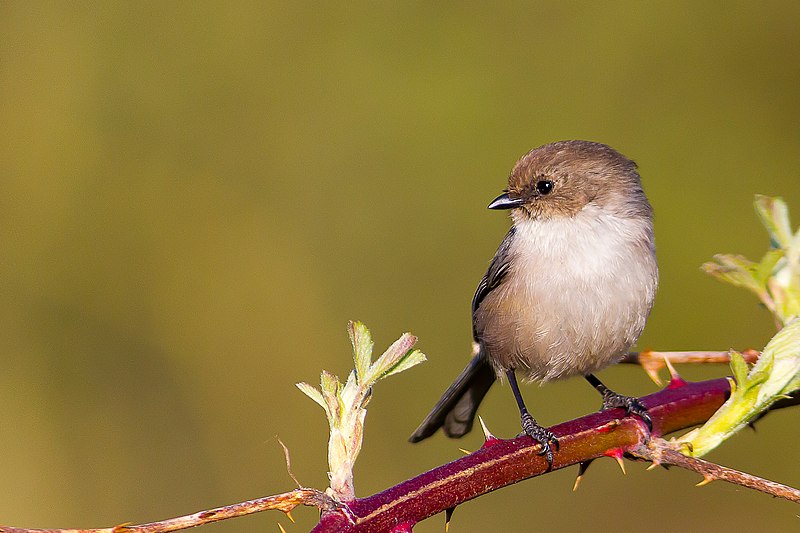
The American bushtit is a small, social bird found in the New World. It’s the only species of its genus and family, Psaltriparus minimus.
First described by John Kirk Townsend in 1837, it inhabits forests and coasts from Alaska to Mexico.
With their tiny size (4-5 inches) they are easily identified by their gray or brown backs with white underparts.
Bushtits have long wings allowing them to travel quickly between trees; they form flocks that move together through branches looking for food such as insects, spiders eggs and fruit while emitting soft chirps or squeaks.
They build beautiful large pendulous nests made of mosses which hang from tree branches high above ground level where they sleep at night.
These charming birds make delightful company during outdoor activities like hiking or camping trips.Scientific classification:
| Kingdom | Animalia |
| Phylum | Chordata |
| Class | Aves |
| Order | Passeriformes |
| Family | Aegithalidae |
| Genus | Psaltriparus Bonaparte, 1850 |
| Species | P. minimus |
Also Featured In: Chickadees Birds, Birds That Live in Colorado
5. Black-Chinned Sparrow
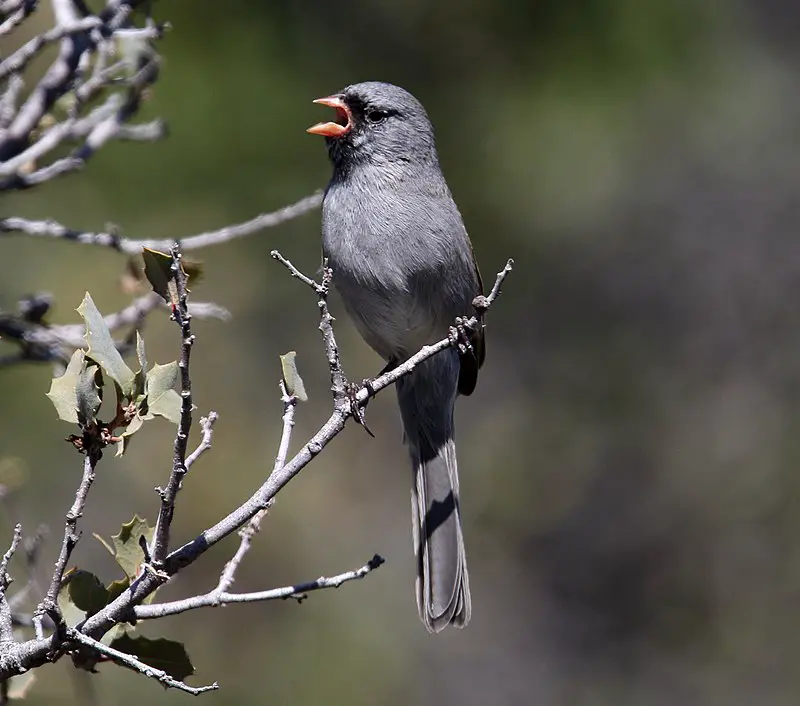
The Black-chinned Sparrow is a small, slim bird found in the southwestern United States and Mexico. It has gray plumage with reddish-brown on its wings, tail feathers, and black chin.
Its long tail helps it to maneuver quickly through dense vegetation when searching for food or seeking shelter from predators.
This species migrates south after breeding during summer months while those living in Mexico are year-round residents of their habitat.
The diet consists mainly of seeds but they will also eat insects such as grasshoppers and caterpillars as well as spiders and other invertebrates for protein rich nutrition supplementing their seed based diet.
They require open habitats like grasslands to find food sources so conservation efforts focus on providing these important habitats throughout their range.
This includes avoiding land conversion into agricultural areas which could impact them adversely if not managed properly by local authorities.Scientific classification:
| Kingdom | Animalia |
| Phylum | Chordata |
| Class | Aves |
| Order | Passeriformes |
| Family | Passerellidae |
| Genus | Spizella |
| Species | S. atrogularis |
Also Featured In: Sparrows Species,
6. California Scrub Jay
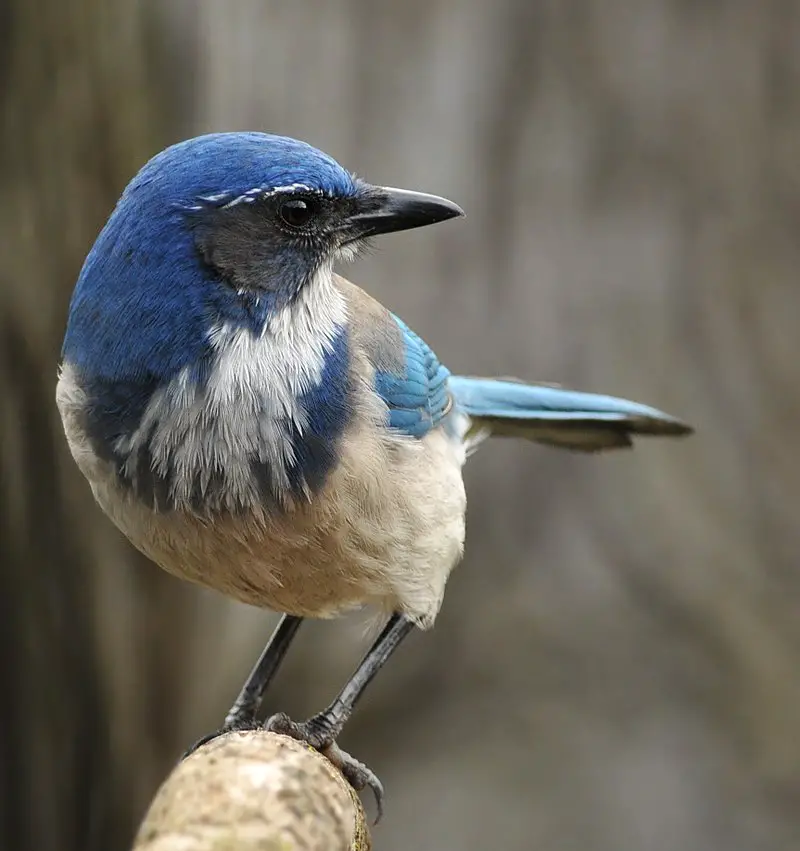
The California scrub jay is a species of bird native to western North America. It can be found from southern British Columbia all the way down through California and western Nevada near Reno, up to west beyond the Sierra Nevada range.
This beautiful blue feathered bird was once categorized with Woodhouse’s scrub jay as the “western scrub jay” along with island scrub jays.
The California Scrub Jay has distinctive features such as its greyish-blue feathers on its head, wings and tail; white cheeks; dark bill; and strong legs for perching in trees which makes it stand out among other birds in its family.Scientific classification:
| Kingdom | Animalia |
| Phylum | Chordata |
| Class | Aves |
| Order | Passeriformes |
| Family | Corvidae |
| Genus | Aphelocoma |
| Species | A. californica |
Also Featured In: Common Californian Birds, Blue Birds You’ll Found around Us
7. California Towhee
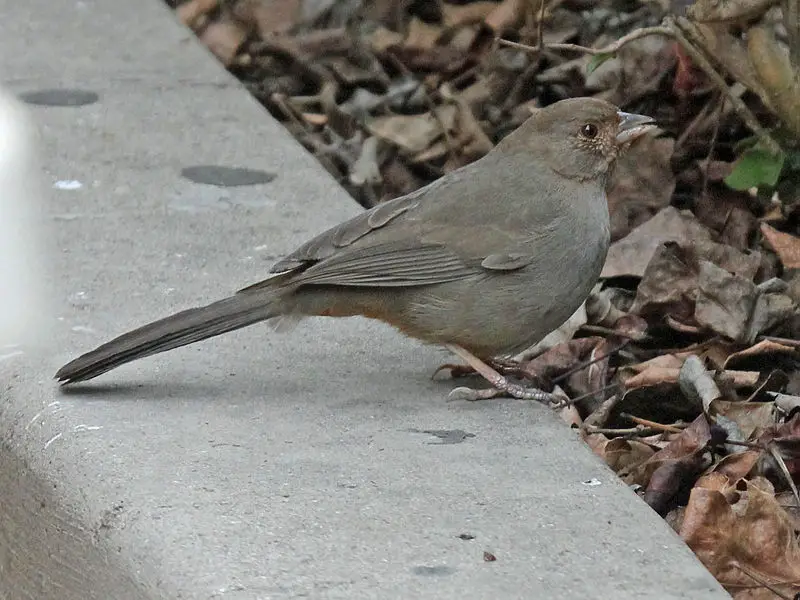
The California towhee (Melozone crissalis) is a medium-sized bird belonging to the family Passerellidae.
It can be found in coastal regions of Oregon, California and Baja California Sur in Mexico.
This species has been subject to taxonomic debate – some authors place it within Fringillidae instead.
The male Californian towhee are easily identified by their greyish brown plumage with black streaks on its back, tail and wings; while females have duller colors than males but still retain the same patterned feathering as them.
Additionally, they possess an orange-colored bill and legs which adds a pop of color to their otherwise dusky appearance.Scientific classification:
| Kingdom | Animalia |
| Phylum | Chordata |
| Class | Aves |
| Order | Passeriformes |
| Family | Passerellidae |
| Genus | Melozone |
| Species | M. crissalis |
Also Featured In: Birds Live Near San Diego, Birds that Live in San Francisco Bay Area
8. California Thrasher
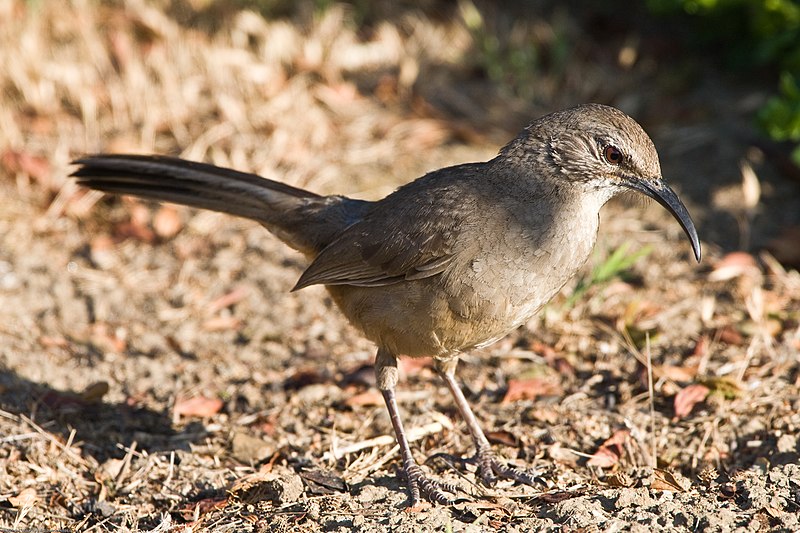
The California thrasher is a member of the Mimidae family and is found in chaparral habitats in both California and Baja California. It has grey-brown upperparts, white underparts with pale streaks, yellow eyes and a black bill.
Its long tail helps it to forage through dense vegetation as well as aiding its agility when climbing trees or shrubs.
The species’ diet consists mainly of insects such as beetles, ants and grasshoppers but can also feed on small fruits like berries or seeds from wildflowers.
It builds an open cup nest out of twigs, stems and leaves which are lined with soft material like feathers or fur near the base of bushes or low tree branches.
This bird forms part of a superspecies along with crissal thrasher (Toxostoma crissale) and LeConte’s thrasher (Toxostoma lecontei).Scientific classification:
| Kingdom | Animalia |
| Phylum | Chordata |
| Class | Aves |
| Order | Passeriformes |
| Family | Mimidae |
| Genus | Toxostoma |
| Species | T. redivivum |
9. California Gnatcatcher
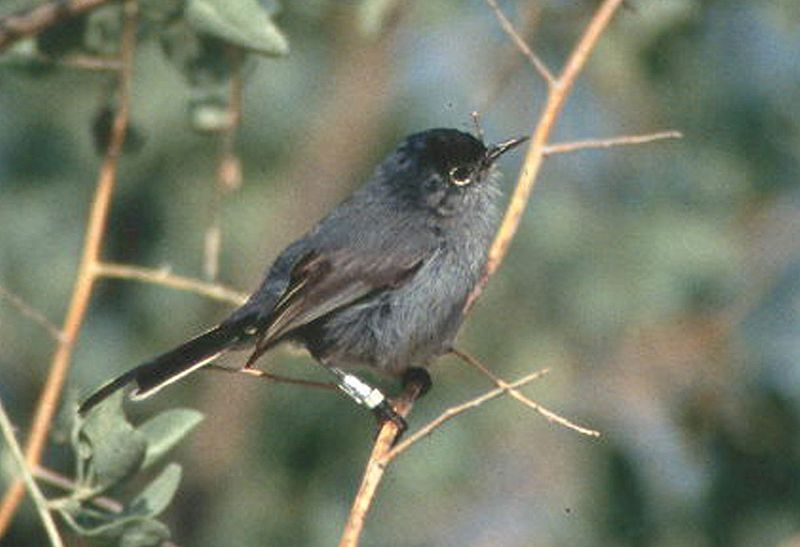
The California gnatcatcher is a small, insectivorous bird which inhabits dense coastal sage scrub growth.
It measures 10.8 cm (4.3 in) long and has recently been split from the similar black-tailed gnatcatcher of the Sonoran and Chihuahuan deserts due to differences in plumage coloration.
The male has dusky grey feathers overall with white underparts while the female is brownish above with dull yellow underparts.
During winter these birds often form flocks but are usually solitary during other times of year, making them hard to spot amongst their natural habitat’s foliage.
They feed on various insects such as flies, beetles, spiders and grasshoppers found within their environmentScientific classification:
| Kingdom | Animalia |
| Phylum | Chordata |
| Class | Aves |
| Order | Passeriformes |
| Family | Polioptilidae |
| Genus | Polioptila |
| Species | P. californica |
10. Roadrunner
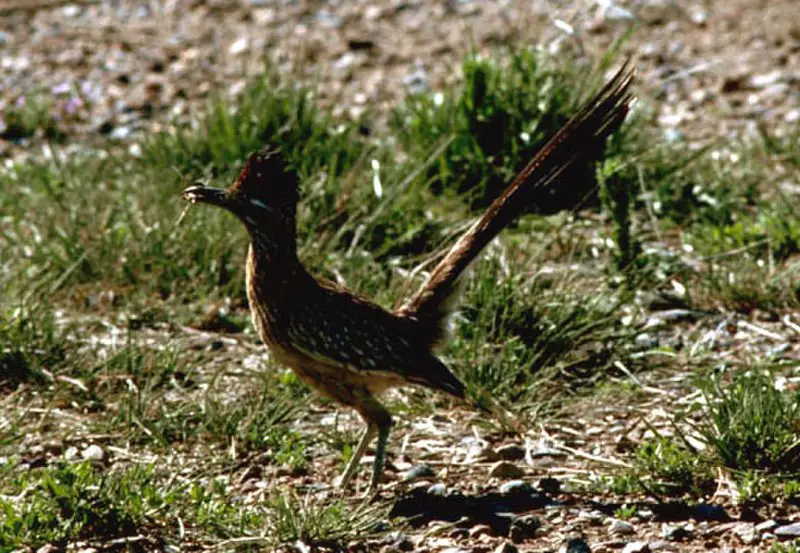
Roadrunners are fast-running ground cuckoos with long tails and crests, found mainly in the deserts of the southwestern United States and Mexico.
They can fly but usually prefer to run away from predators at speeds reaching up to 32km/h.
Their diet consists mostly of insects, lizards and small rodents.
Roadrunners have unique mating rituals where male birds will perform a dance for their mate before they build nests together out of sticks or other materials on low bushes or even directly on the ground.
These birds also make very distinct calls that sound like “beep beep” which is how they got their name – roadrunner.Scientific classification:
| Kingdom | Animalia |
| Phylum | Chordata |
| Class | Aves |
| Order | Cuculiformes |
| Family | Cuculidae |
| Subfamily | Neomorphinae |
| Genus | Geococcyx Wagler, 1831 |
Also Featured In: birds of New Mexico, Birds of Symbolism